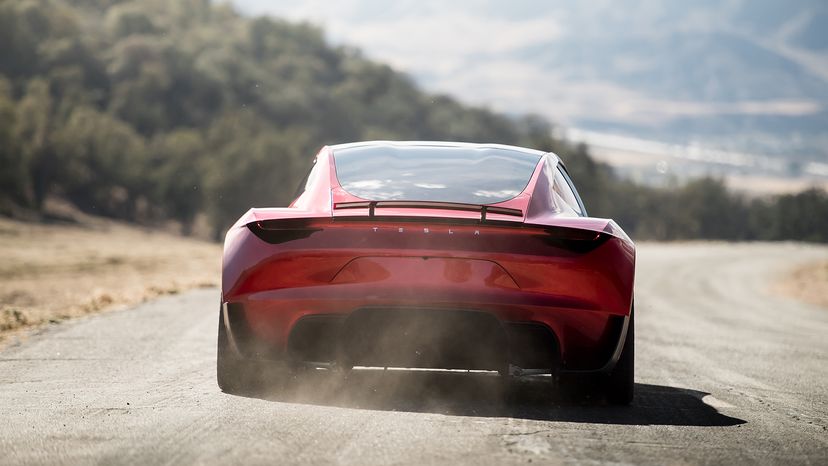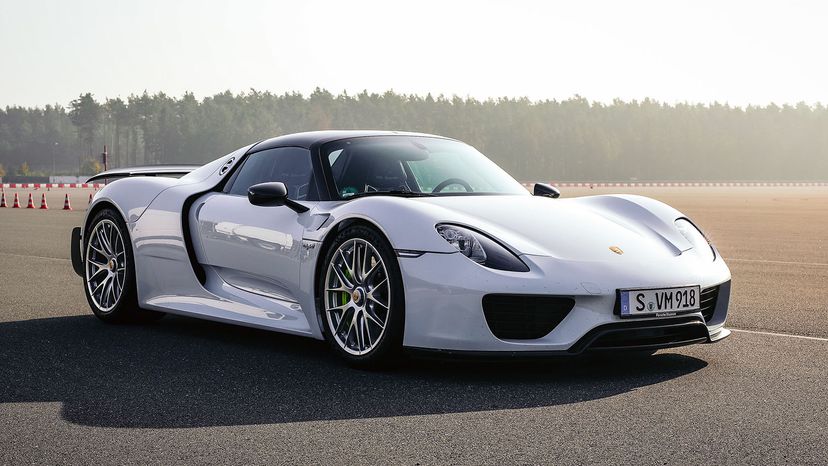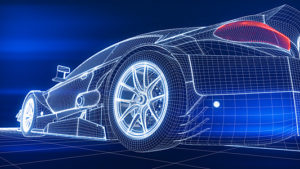\”

You\’re at the red light and the guy next to you revs his engine. You laugh to yourself, though, because he clearly doesn\’t notice you\’re driving a Tesla Model S (or he thinks an electric vehicle [EV] is a handicap). The light turns green, you put the pedal the floor and leave him in the dust. Bye, Felicia!
The point of the story is to say that if you want to go from zero to 60 mph (zero to 96.5 kph) as fast as possible, an electric car is the way to go. Surprised? So was the guy at the red light that you smoked in this little made-up story. However, gas-powered cars can still have faster top speeds. So what\’s the key difference between the two cars? Mostly, the transmission, or lack thereof.
Quick vs. Fast
First, in general racing terminology, "quick" means how long it takes to get from point A to point B, while "fast" means the top speed a vehicle reaches. In drag racing, for example, the "faster" vehicle hits the higher speed over the course of the race, but the quicker vehicle gets to the finish line first.
Electric cars are capable of being quicker than gas-powered cars, but EVs aren\’t yet capable of going faster. Our little zero to 60 scenario is a good example. Gasoline cars do have a performance advantage when those top speeds are being sustained for longer periods of time.
A 2015 Fortune article featured former Tesla engineer Dustin Grace, who provided a good overview. Electric vehicles generate much more torque than gas vehicles, which is important because torque is what drives the vehicle forward. Furthermore, an electric car\’s motor eliminates the need for a traditional transmission in many modern designs. The power goes straight to the wheels for instant acceleration, making EVs quicker on the start.
In a gas-powered car, the engine has to route the power first to the transmission and then to the wheels (the components collectively known as the "drivetrain" or "powertrain"). This process takes longer, wasting crucial zero to 60 potential. Some of the power created by the engine — usually about 15 percent — is also wasted traveling through the drivetrain, known as drivetrain loss.
Efficiency Equals Horsepower
If you\’re comparing an electric car and a gas car with the same horsepower rating, the electric car is able to use a lot more of its horsepower, too. That\’s because EVs have fewer moving parts, so they\’re able to run more efficiently. (Efficiency isn\’t based strictly in terms of fuel consumption; the vehicle\’s speed and agility are affected, too.) This also makes electric cars cheaper to run over time by reducing engine maintenance costs.
The instant torque and the simplified powertrain are the two factors that enable an electric vehicle to take off from a stop much faster than a gas vehicle of comparable power specs. That\’s how Tesla and other electric supercars achieve zero to 60 times of just two or three seconds.
Tesla doesn\’t provide horsepower ratings, but Road and Track used a machine called a dynamometer to test a top-end 2017 Model S P100D with the Ludicrous Speed upgrade. They got a reading of 588 horsepower at the wheels (which, again, is somewhat less than it would be rated if tested at the engine).
When Motor Trend road-tested the Tesla Model S P100D in 2017, the magazine had never seen a zero to 60 run in less than 2.3 seconds. But the Tesla came in at 2.275 seconds, which at the time made it the quickest stock production vehicle ever. However, as Frank Markus at Motor Trend explained, if that Tesla was racing against a Ferrari LaFerrari, Porsche 918 or McLaren P1, those three gas-powered supercars would catch up to the Tesla and pull ahead within seconds.
If Ferrari or McLaren are a little outside your budget, a gas-powered car like the 2019 Dodge Challenger SRT Hellcat, with its 840-horsepower supercharged 6.2-liter V8 engine, boasts a top speed of 203 mph (326.6 kph) and a zero to 60 time of 3.4 seconds.


The Transmission Disadvantage
In terms of zero to 60 times, electric cars currently have the big advantage. However, the EV industry is realizing that their cars need to sustain that performance over the long haul, which leads us back to the transmission.
For all of the enthusiasm surrounding EV\’s performance and efficiency thanks to the absence of a traditional transmission, some engineers are actually working on new transmission designs specifically for electric cars. That\’s because the lack of one keeps the EV\’s top speed slower than it otherwise would be.
A well-designed transmission, specifically for an EV, would act as a sort of intermediary to help manage the car\’s power delivery, as well as the battery range. This would make it possible to drive at faster speeds for longer periods of time while still wasting less energy. Generally, the batteries on electric cars top out at about 250 to 310 miles (402 to 498 kilometers), but an advanced transmission design could help extend that range. The key is to keep it simple, intervening only enough to make the car as good at fast speeds as it is at low speeds.
According to The Drive, there are indications that Tesla is working on a new electric transmission, thanks to a projected 1.9-second zero to 60 time for the upcoming Tesla Roadster. But for now, the 2.3-second Model S will have to do.
Now That\’s Interesting
An electric car makes the same amount of torque regardless of how fast it\’s traveling, while gas cars have what\’s known as a torque curve, a spot in the engine\’s power range where maximum torque is produced. Just like a gas car isn\’t able to use every bit of the horsepower it\’s rated for, most of the time an EV isn\’t able to use all of its torque, either.
Gas Powered or Electric Cars FAQ
Are electric cars better than gas cars?
Electric cars beat gas cars in terms of sustainability and environmental-friendliness. However, so far, gas cars have the edge in terms of horsepower and mileage.
Are electric cars better than gas cars for the environment?
Electric cars have a positive impact on the environment because of the fewer emissions they produce. Gas cars, on the other hand, produce smoke and carbon dioxide that pollutes the environment.
What are the advantages and disadvantages of electric cars?
Electric cars have lower costs and emissions and have a positive impact on the environment. The only thing they lack is the impressive performance and high speeds of traditional gas cars.
Why are gas cars better than electric cars?
Traditional gas cars perform better at high speeds as compared to electric cars. Gas engines are simpler and easier to manufacture and maintain.
Are electric cars more cost effective?
Yes. Electric cars are cost-effective over time because of fewer emissions.












